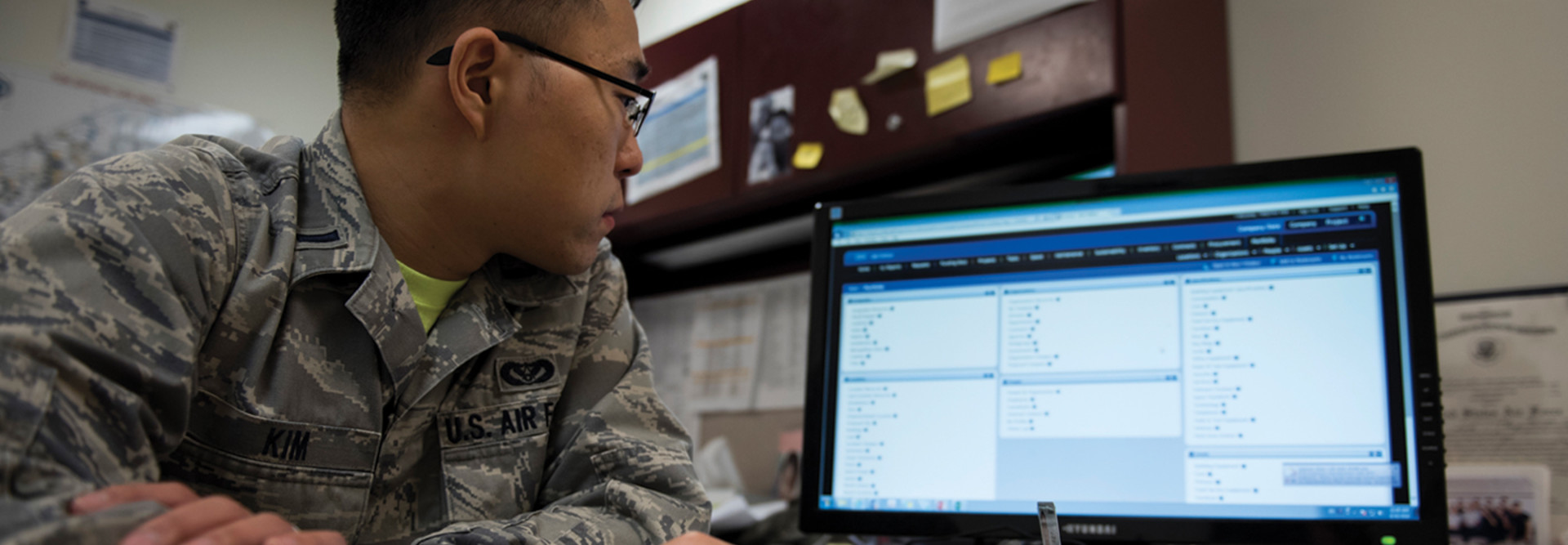Air Force Teams with ServiceNow on a New Help Desk
The new EITaaS help desk was really “about reimagining how we do help desk services,” Marion tells Federal News Network.
ServiceNow started as IT service management platform to help agencies and organizations with services such as IT help desks, but it has grown into much more than that. Just one of its many enhancements is the ability to automate workflows.
That approach is being applied to the Air Force’s new help desk. The Air Force is aiming to move to a Tier 0 approach for IT support, which includes wikis, chatbots, virtual assistants and other tools that let users troubleshoot IT problems rather than contacting a help desk employee.
“If you think about Genius Bars with Apple, how do you build that next generation of service desk that is artificial intelligence-enabled, tier zero?” Marion says. “That went live for about 70,000 airmen with a ServiceNow platform underpinning how do you work trouble tickets with speed and agility and how do you get tier zero help so as a user I can actually fix more of my problems, and starting to enable some of the Genius Bar concepts.”
Marion adds: “Instead of additional duties as assigned, it’s actually trained and armed people that can come in and help remedy any problems.”
The Air Force spent about seven months launching the service desk proof of concept at its “risk reduction” bases, Buckley Air Force Base in Colorado, Maxwell AFB in Alabama, Offutt AFB in Nebraska, Joint Base Elmendorf-Richardson in Alaska, Cannon AFB in New Mexico and Hurlburt Field in Florida.
As part of the initiative, the Air Force is bringing in new devices such as Google Chromebooks, Apple Macs and iOS devices.
“We want to create a lighter footprint, a smaller footprint and something that is more agile and mobile for our airmen whether they are in the flight line or at their desks,” Marion tells Federal News Network. “How do we make sure everyone is connected 24/7? An artificial intelligence enabled helped desk is embodied in this initiative.”
DISCOVER: Find out how to innovate while overcoming budget challenges.
Air Force’s EITaaS Program Expands
The Air Force is working with AT&T and Microsoft on the Network as a Service element of EITaaS. As Federal News Network notes, that will bring a broadband infrastructure to its bases of 100 gigabits per second.
“Cloud is not very useful if you can’t connect to it. This is providing the global, high-speed rail to get there,” Marion says. “Then we’ve awarded a couple of contracts, one is in the southeast region of the U.S. where we implemented 16, 4G-enhanced bases.”
The Air Force’s Cloud One and Platform One efforts are part the network modernization effort, Marion tells Federal News Network.
Currently, 40 large-scale applications live on Cloud One, and by the end of the year, the entire Air Force will have migrated to Office 365.
“We are continuing to move forward with our bring-your-own-device (BYOD) program and accelerating that option,” Marion says. “Network-as-a-service has had some challenges, but we are seeing some good progress specifically on the Microsoft side in the work they are doing and looking at how they are starting to transform our network.”
“The bottom line is there are a couple of challenges like there are with any big project, but I think there is some really big goodness around these big programs around cloud, mobile devices, end user support and help desk,” Marion adds. “Our biggest focus is how do we start to scale those into large number of users from an acquisition perspective? That is one of the key next steps for whoever follows me.”











